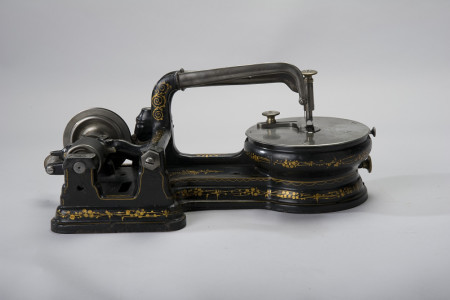Helen Blanchard was born into a wealthy Portland clan in 1840. But the family fortune evaporated in the financial panic of 1866 — also the year much of Portland burned to the ground. Her father had to sell their family home. Soon thereafter, he died.
That’s when Helen moved to Boston, with no formal mechanical training, and embarked on her career as the 19th century’s most successful female inventor. She was over 30 when she filed her first patent for the now ubiquitous zig-zag sewing machine, used for making buttonholes.
When she filed her final patent, over 40 years later, she had 28 of them to her name. Most had to do with commercial sewing machines but she also patented an improved surgical needle and a cranked pencil sharpener.
One of her zig-zag, buttonhole sewing machines can be found in the Smithsonian Museum of American History.
After re-making her family fortune through her inventions, Blanchard was able to re-purchase the family homestead here in Portland in 1901. She died in 1922. It’s unclear just what happened to her fortune after that. She had no heirs and no will was filed in probate court.
Today’s story is brought to you, in part, by the excellent book “Mothers and Daughters of Invention: Notes for a Revised History of Technology,” by Autumn Stanley. The idea came from a random guy I met at Evergreen Cemetery.
Disclaimer: I’m not a historian. I owe everything I know to the dedicated research of those who have come before me. These character sketches are assembled from multiple (often antique) sources and sprinkled with my own conjecture. I’m happy to be set straight or to learn more.
One of Helen Blanchard’s original zig-zag buttonhole sewing machines as seen at the Smithsonian Museum of American History.
Helen Blanchard’s patent for a hat sewing machine.
Helen Blanchard’s patent for a crank pencil sharpener.
This hard to read stone marks the final resting place of Helen Augusta Blanchard. She was an inventor and died a rich woman.


